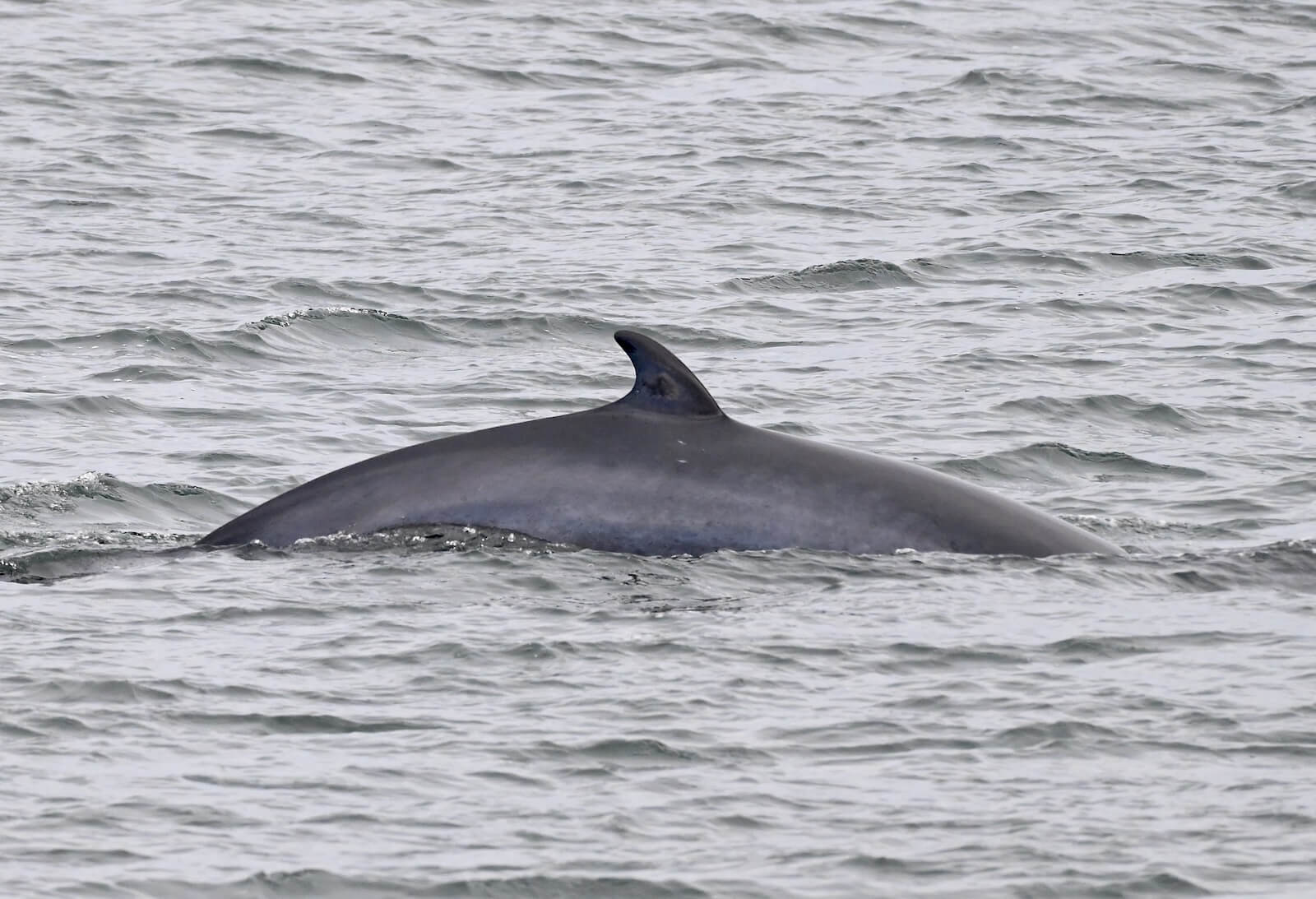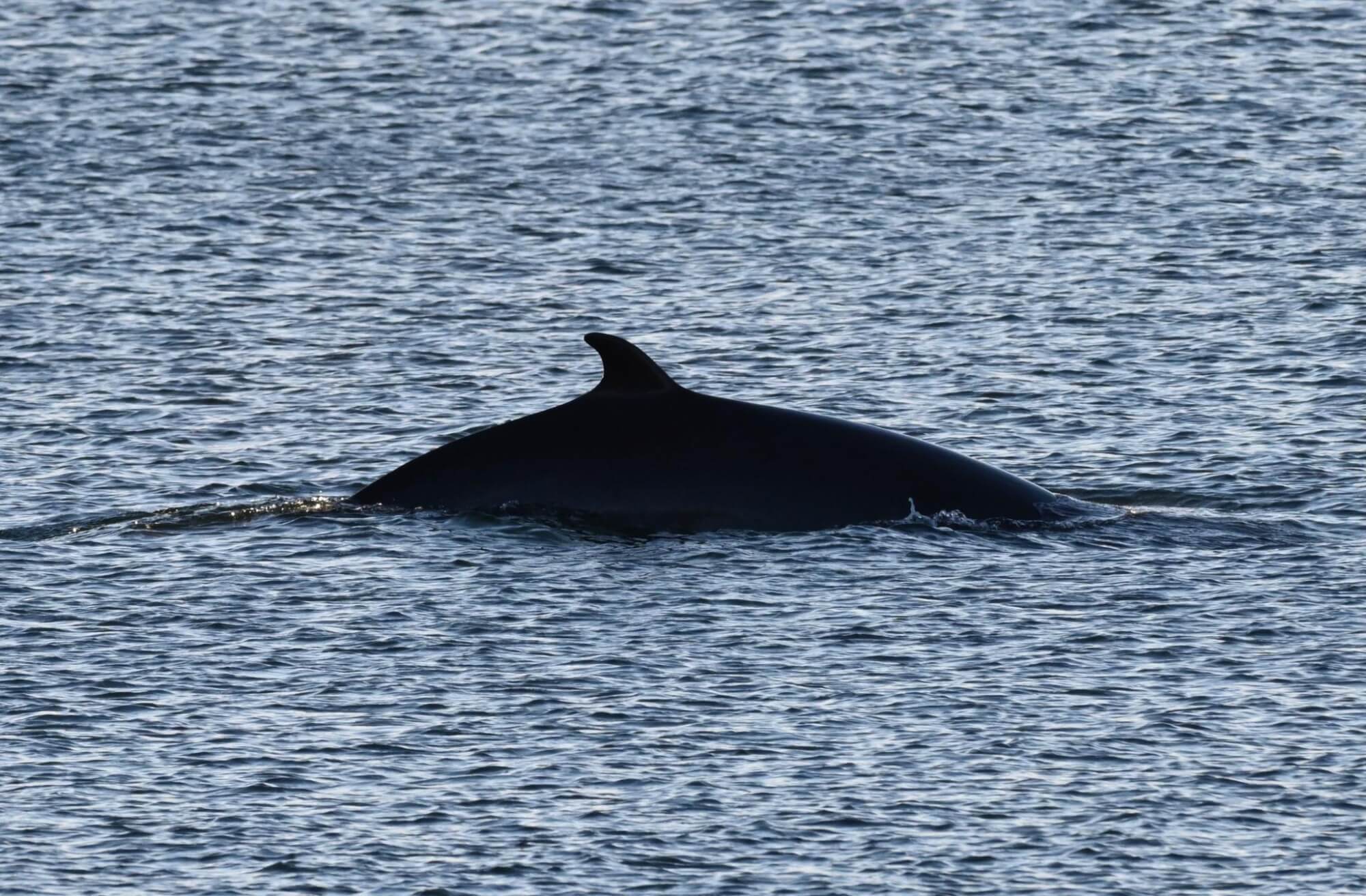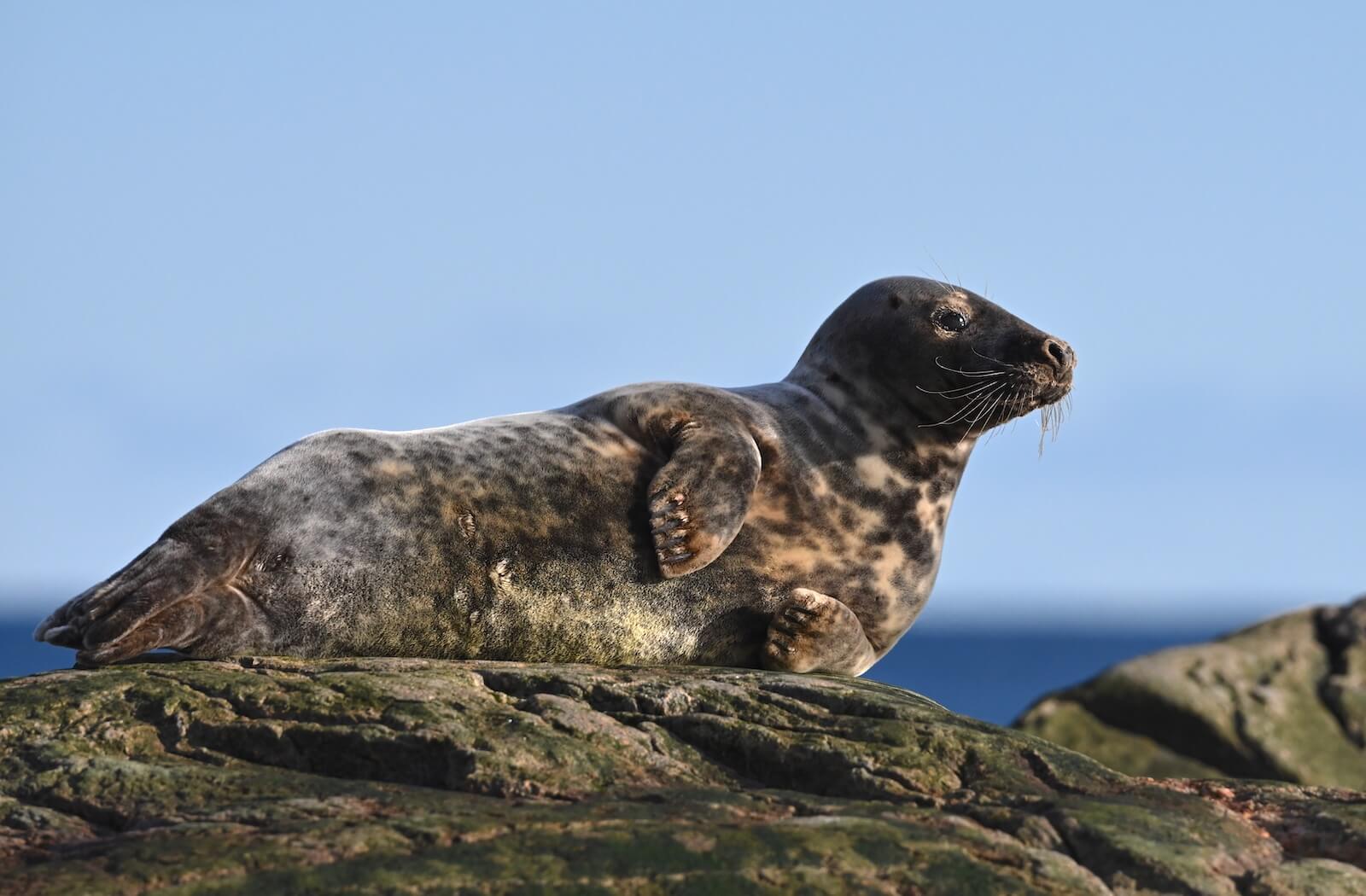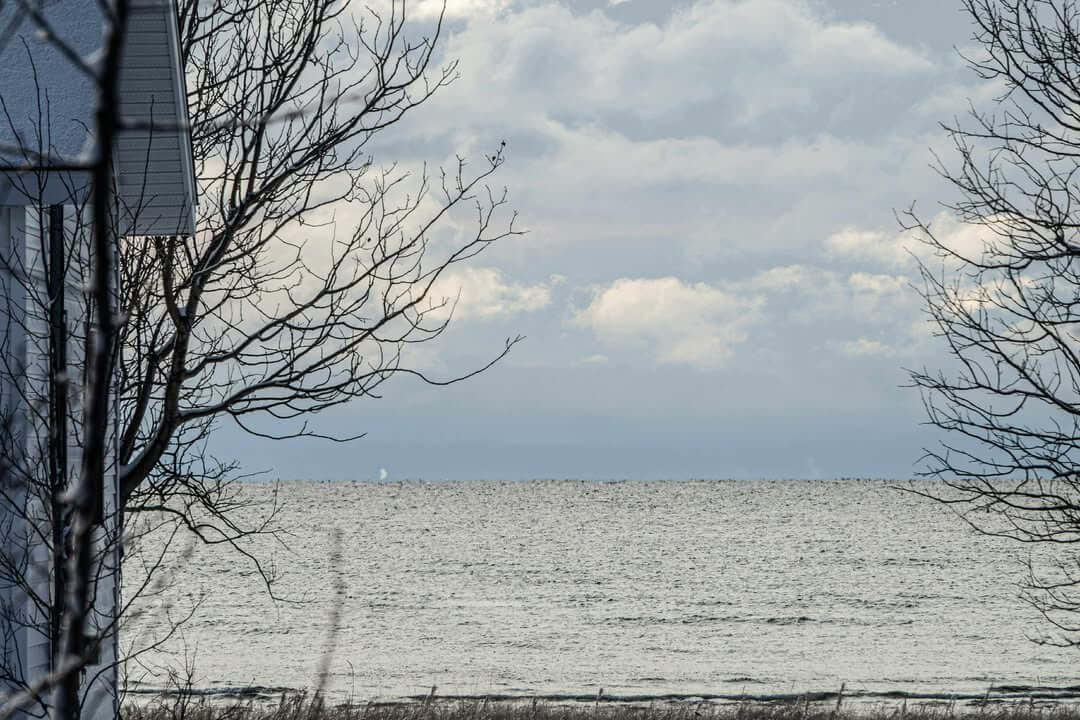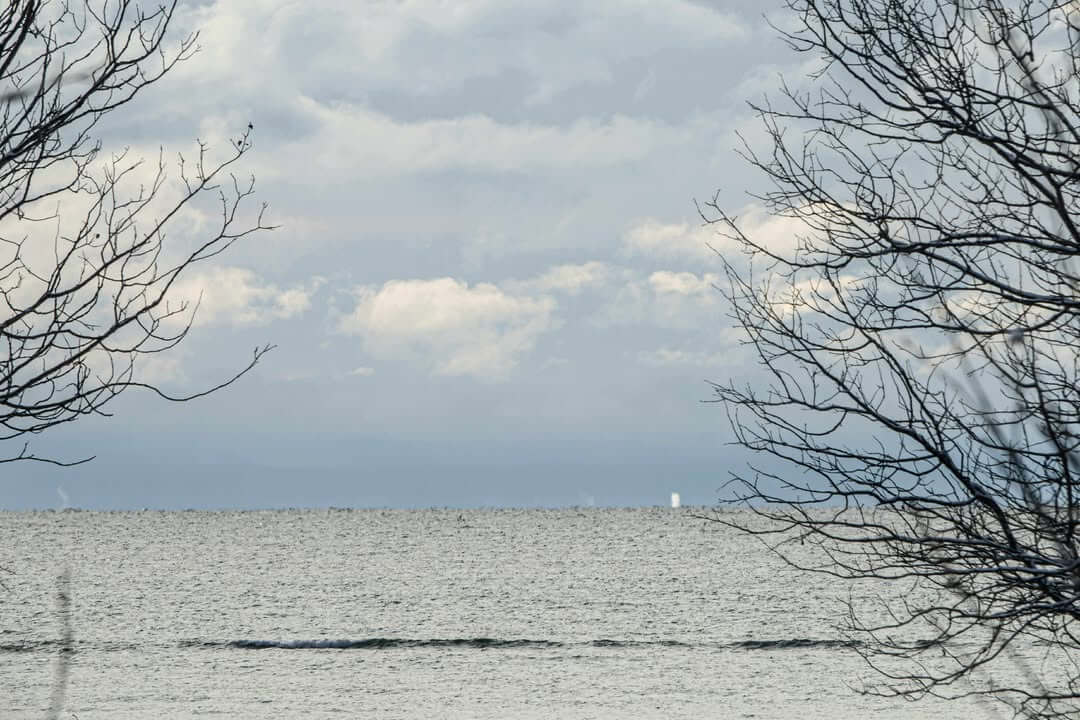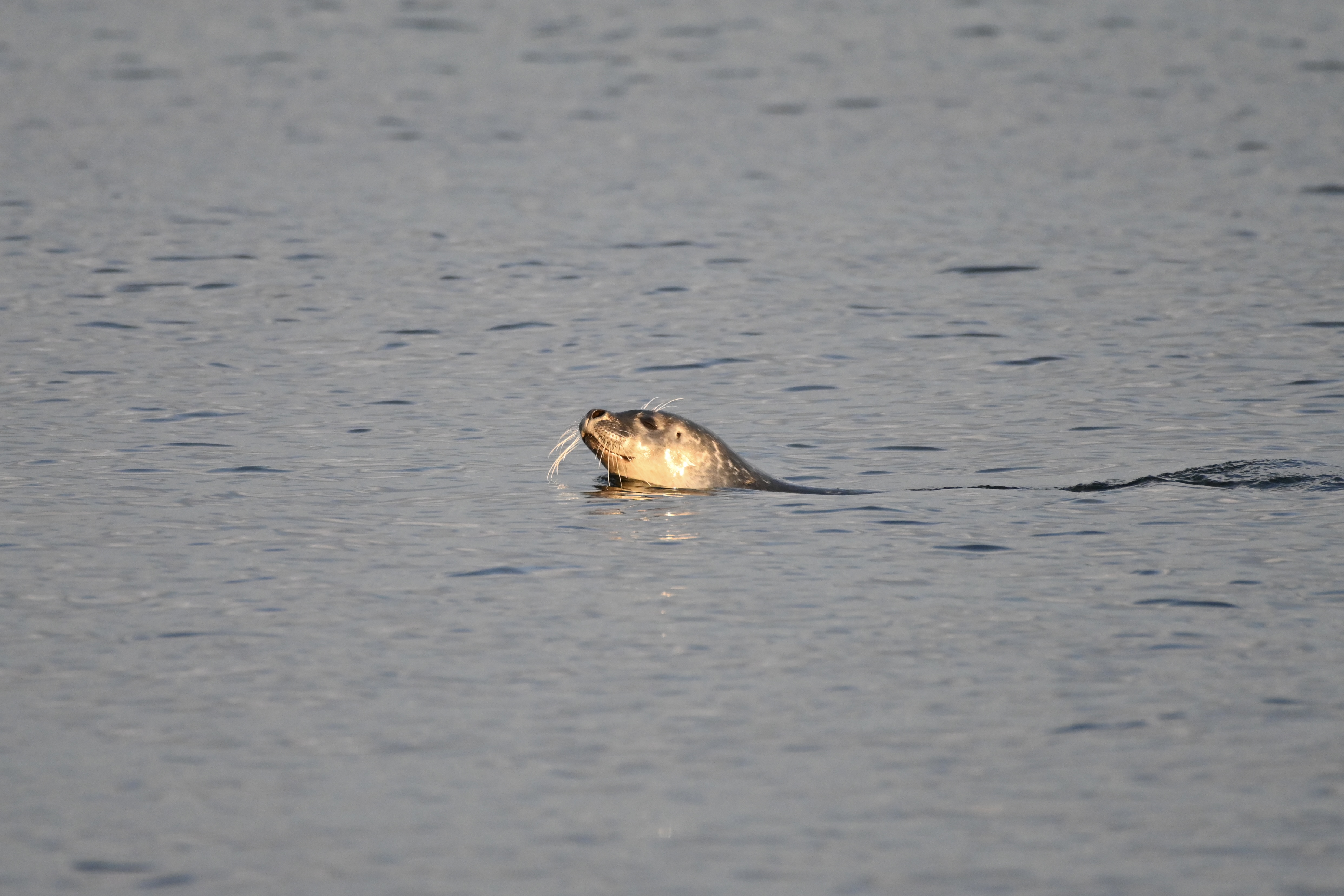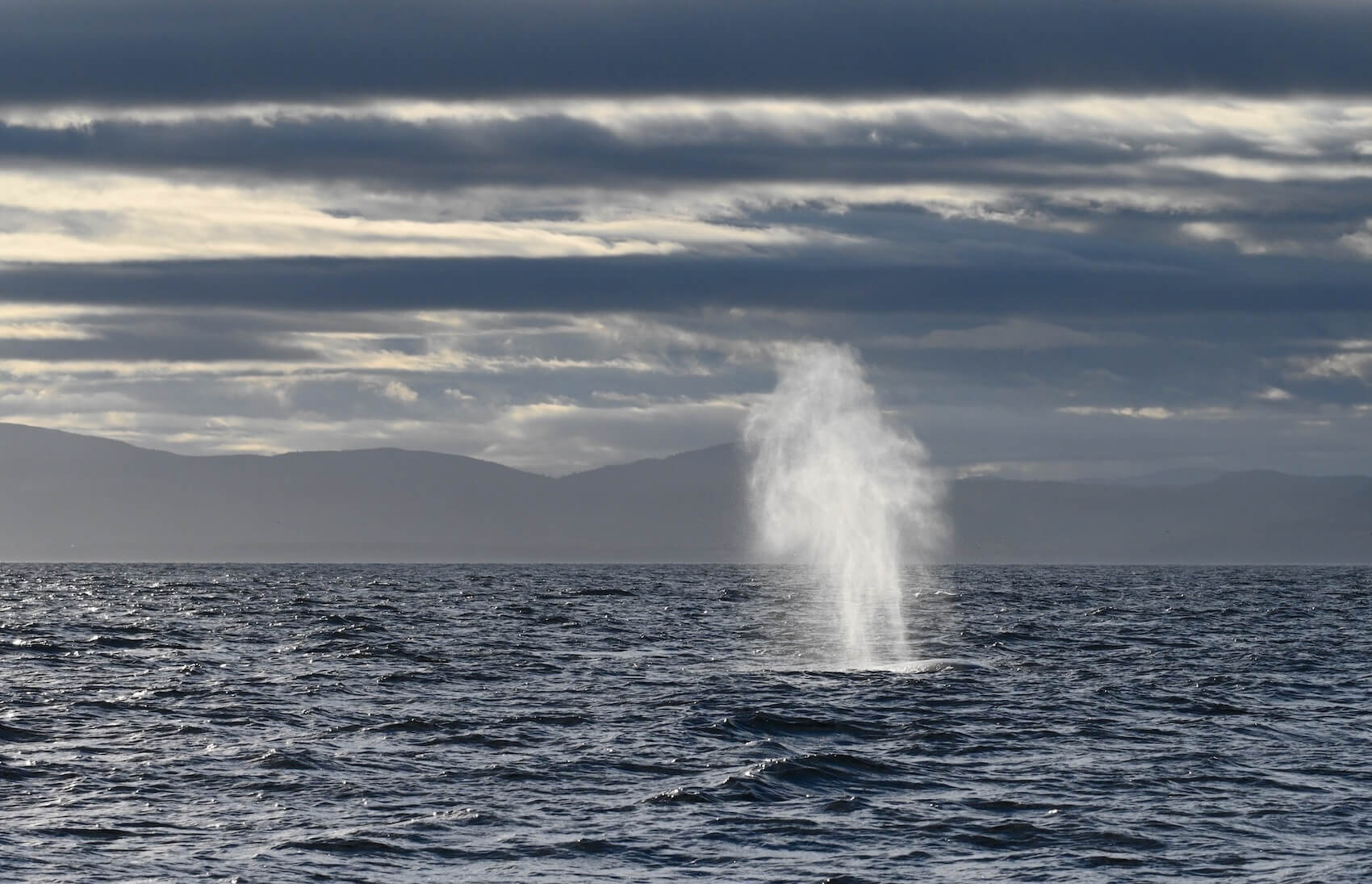Minke whales are the stars of the week! Their clearly visible blows rise and form plumes that dissipate in the strong winds and swirling snow. A few seals make themselves cozy on the rocks, delighting those who spot them from afar. The white backs of belugas are sometimes visible, as are the characteristic columns of fin whales.
Great stories
When it comes to sharing minke whale encounters in the estuary, anecdotes abound! The smallest of the whales generally frequents the waters of the estuary and the gulf from March to December. Its presence here is therefore quite normal in this dreary month of November.
“Minke whale feeding near the ferry […]; we were even able to see its ventral grooves!” shares a visitor passing through. “Minke off the coast of Tadoussac this morning […]. In the cold air, its blow looks much bigger than it might have appeared in the summer!” adds a naturalist working in the region. A few days later, another enthusiast describes one of her sightings: “Last Friday, on my way back from a hike in Baie-Sainte-Catherine, I stopped at Pointe-Noire and spotted a breaching minke whale!” This behaviour consists of the cetacean hurling itself out of the water, often while it is feeding, at which point its pink throat can sometimes be seen.
“The wind was blowing hard last Saturday, but the spouts of this minke whale were clearly visible! It was off Pointe Rouge, after which it headed out to sea,” reports a Tadoussac resident who braved powerful gusts to scan the waters. Another keen observer shared her encounter with the smallest of the rorquals: “In Tadoussac Bay, beyond Prince Shoal, I spotted a huge blow. Following a shower of glittering sparks were a dark back and dorsal fin. The minke whale seemed to be splashing around near Pointe Rouge before it took a final breath and dove again. A beautiful start to a chilly day!”
Was it the same individual… or several? Hard to say! Thanks to the high-quality pictures taken of their dorsals, it may be possible to photo-identify these minke whales. This research technique consists of a detailed examination of the notches and markings on this part of the animal’s body, which differ from one individual to another and allow them to be identified. Farther east, three minke whales were also swimming in the direction of Franquelin.
Seals and belugas
Harbour and grey seals stroke a pose on the shore at several locations along the St. Lawrence River. A grey seal here, a harbour seal in Tadoussac, another in Les Bergeronnes, and one in front of the Marine Mammal Interpretation Centre… Up and down the estuary, pinnipeds are everywhere! “For over three hours, a harbour seal was lying on its favourite rock in the middle of the Manicouagan River…!” points out a resident of Franquelin. Comfortably settled on its rock, the seal seemed alone in the world in the middle of this tributary that empties into the St. Lawrence.
A few solitary belugas were seen swimming near Tadoussac, but their presence was sporadic: “We’ve been seeing a few belugas on occasion, but didn’t see any today,” states one resident.
Large rorquals on the horizon!
“I saw two beautiful, large fin whales between Baie-Comeau and Franquelin,” reports one seasoned observer. Recognizable by their blows, which can reach upwards of 4 to 6 metres high, fin whales generally do not show their tail flukes when they dive. They can be told apart from blue whales by their smaller size and darker colouring. Farther east, near Gallix, other spouts were observed: “[I] saw some very impressive blows offshore on the horizon, at around 8:50 Sunday morning […]. Four alternating blows, quite close to one another. Were they blues? I had just enough time to grab my camera and try to get a few pictures.” Even though the exact species remains unknown for the time being, the height of the blows is a dead giveaway that it was a large rorqual!
Near Cap de Bon-Désir, a naturalist and wildlife photographer reported the presence of fin whales in recent days. “With a great deal of patience and in the middle of a nice snow shower, I was able to capture these photos of the fin whale Ti-Croche on Tuesday afternoon,” he reports. A few days later, he adds: “Early this morning, another fin whale far offshore […]. Although I was unable to identify the individual, thanks to my binoculars I can confirm that it was indeed a fin whale.”
While fin whales are still being observed in the St. Lawrence, it has been quite some time since any humpbacks have been seen. However, the organization Ommag Guadeloupe reports the presence of the first humpback whale of the season in its own study area… Martinique! It can be assumed that for most of the individuals that frequent the St. Lawrence, migration is likely well underway!
Thanks to all our collaborators!
Special thanks go out to all our observers who share their love for marine mammals with us. Your encounters with cetaceans and pinnipeds are always a pleasure to read and discover.
On the water or from shore, it is your eyes that give life to this column.
- Thalia Cohen Bacry
- Patrice Corbeil
- Camille Degache
- Hélène Guitton
- Jade-Audrey Lavergne
- Pascal Pitre
- Renaud Pintiaux
- Andréanne Sylvain
- Ophélie Turgeon
- Marielle Vanasse
And all the others!
Additionally, we would like to acknowledge the following teams that also share their sightings:
Centre d’éducation et de recherche de Sept-Îles (CERSI)
Station de recherche des Îles Mingan (MICS)
Réseau d’observation des mammifères marins (ROMM)
Réseau québécois d’urgence pour les mammifères marins (RQUMM)
Groupe de recherche et d’éducation sur les mammifères marins (GREMM)
Mériscope
Would you also like to share your observations?
Have you seen any marine mammals in the St. Lawrence? Whether it’s a spout offshore or just a couple of seals, drop us a line and send your photos to [email protected]!
Merci aux observateurs et observatrices qui partagent avec nous leur amour pour les mammifères marins! Vos rencontres avec les cétacés et les pinnipèdes sont toujours un plaisir à lire et à découvrir.


